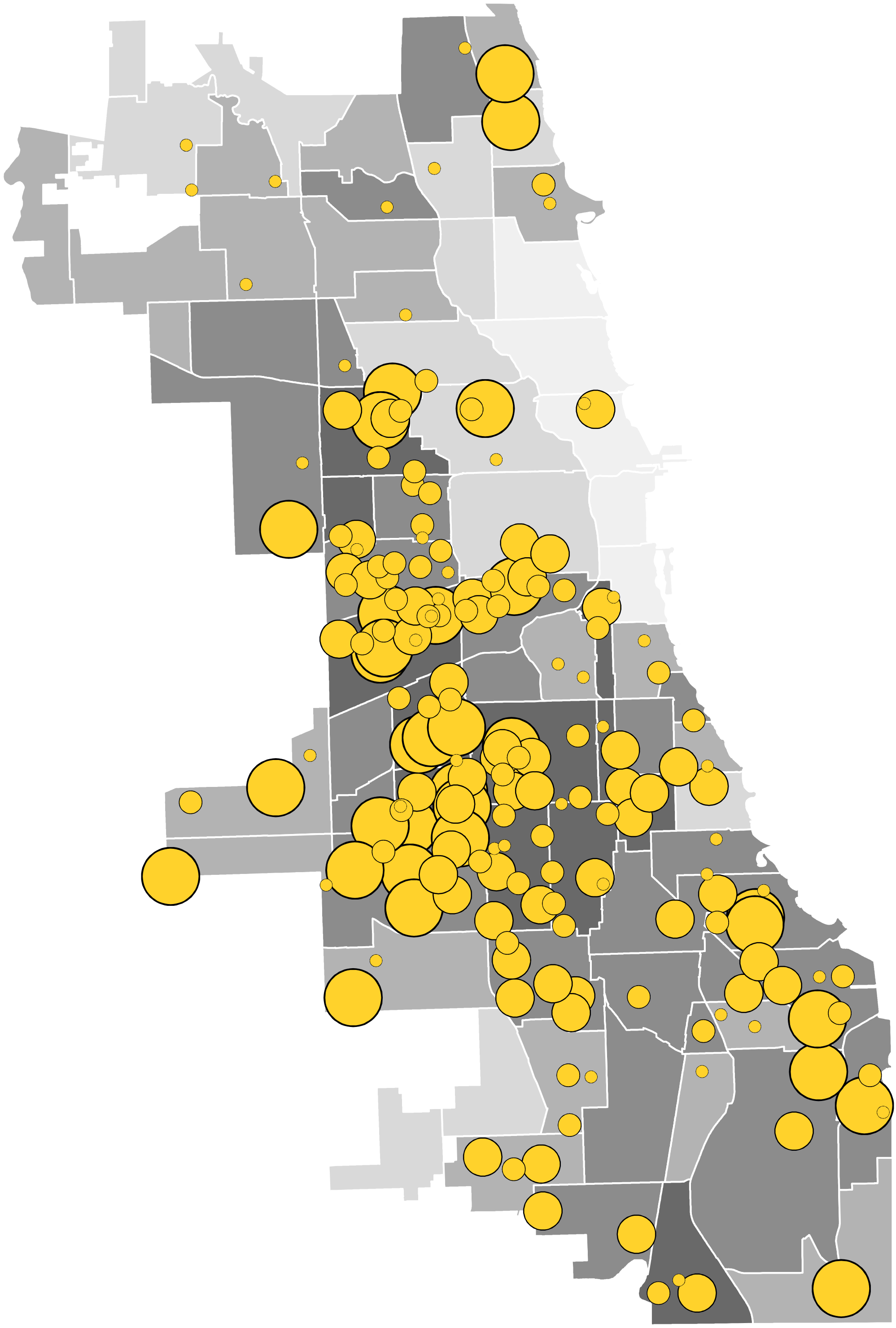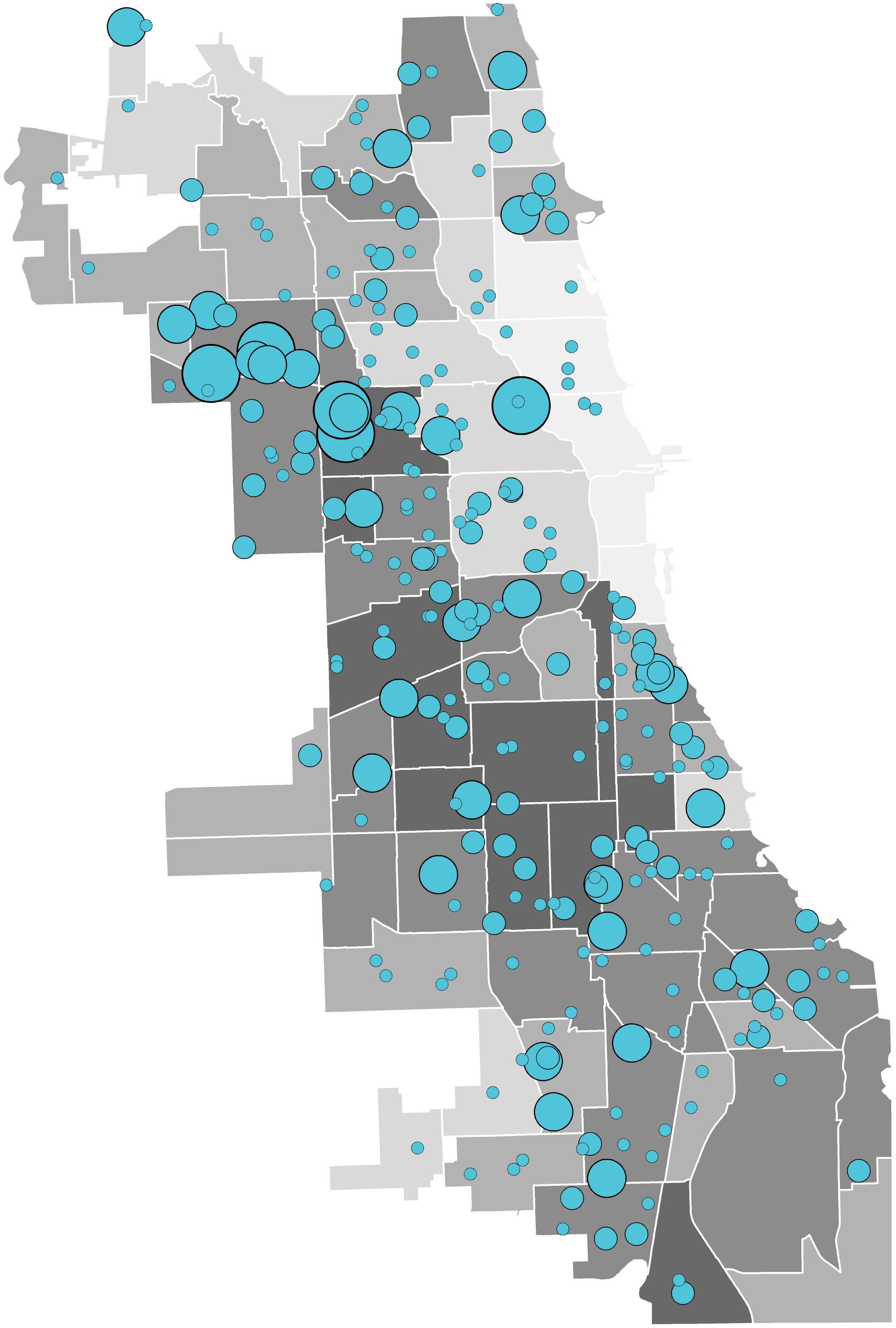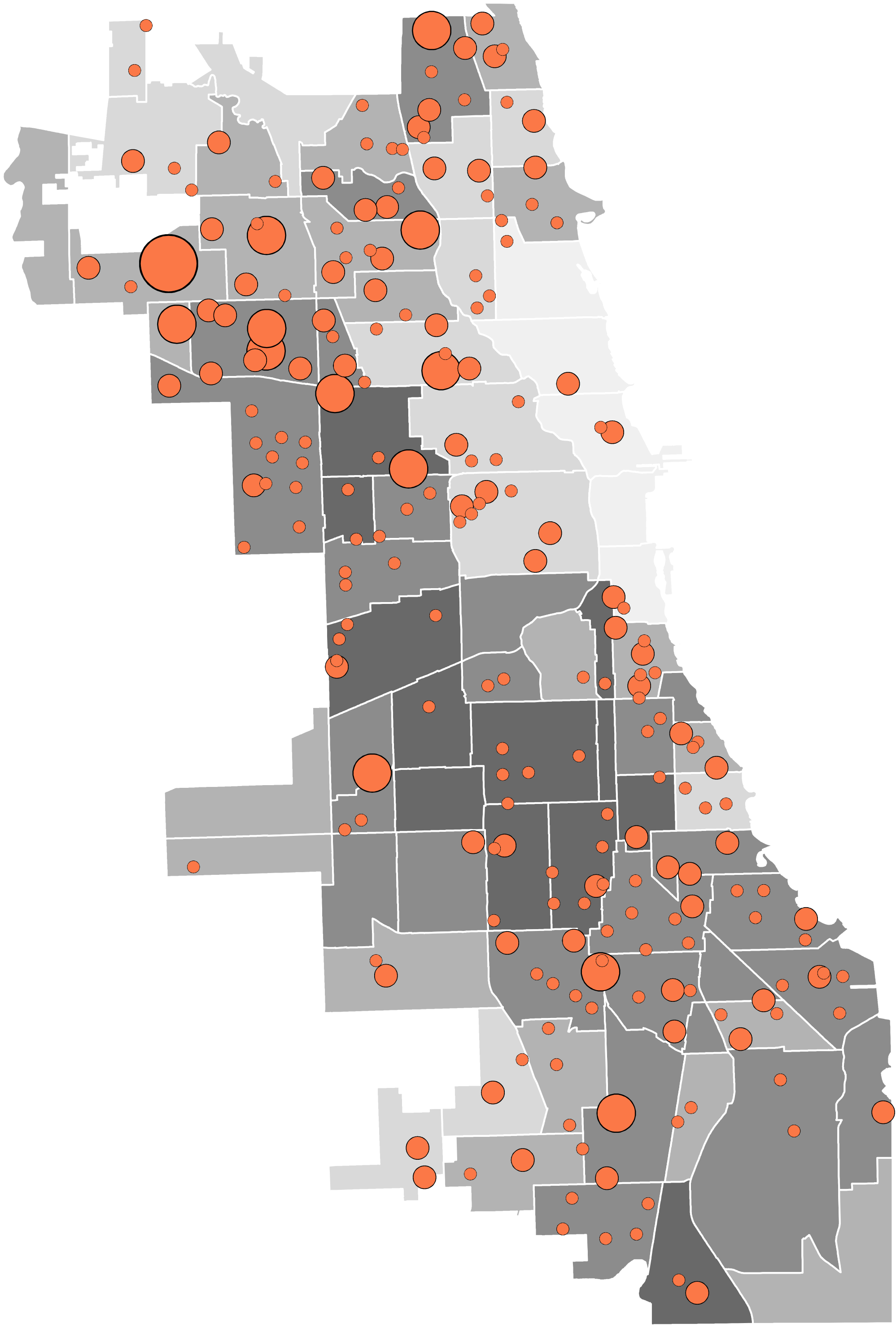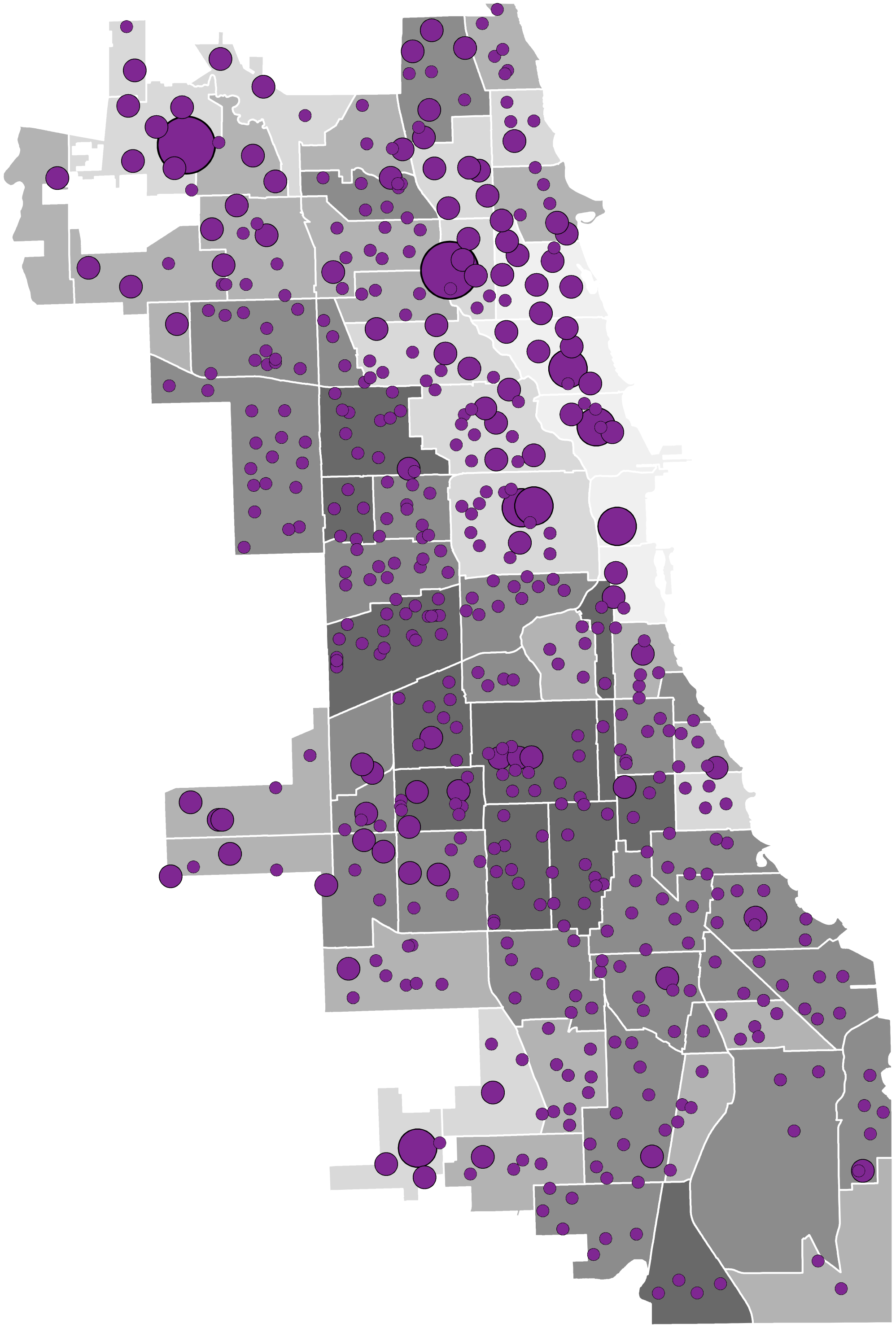We remain committed to supporting school communities during hybrid learning and setting a solid foundation for our curriculum equity initiative. To help stakeholders understand how technology has been distributed across the city, the district has created maps that show device distribution in relation to the economic hardship index developed by the University of Illinois at Chicago (UIC), which examines conditions of economic hardship within Chicago community areas. Please note that this does not reflect devices provided to schools through other investment initiatives.
2019
Equity in Technology Modernization Program
In 2019, prior to the start of the pandemic, the district embarked on a three-year initiative to modernize technology across the district. The technology modernization program provides students with the tools they need to succeed in a 21st century economy and ensures equity of access to high-quality digital learning opportunities for every student. This is another step the district has taken to narrow the digital divide and provide all our students with a rigorous education.
Method for determining device allocations
In close collaboration with the Office of Equity, the district developed a school program eligibility rubric that takes into account the UIC Hardship Index, the number of existing devices that were near the end of service life, and student-to-device ratios at each school. The resulting school participants were predominantly on the south and west sides of the city. The district provided professional development and related classroom management tools to schools that received devices.
Number of devices provided to schools to achieve 1:1 ratio
1 - 250
251 - 500
501 - 750
751 - 1,259
Hardship Index
8.6 - 15.0
15.1 - 30.0
30.1 - 45.0
45.1 - 60.0
60.1 - 84.2
Map symbols may not be to scale depending on your device and browser size.

Spring 2020
Technology Strategy
In response to COVID-19, the district pivoted from the Equity in Technology Modernization program and immediately began allocating devices to students in need, with a focus on the south and west sides. The district used the framework established by the Equity in Technology Modernization program to ensure equity in our device distribution to schools and prioritize students who needed it most.
Method for determining device allocations
Our school leaders know their communities best, and they played an integral role in informing how the district allocated devices. We determined that more than 100,000 devices were needed to support our students in need. Schools distributed their existing stock of devices, and the district filled in the gap with new devices. The district prioritized students based on need and used the UIC hardship index, FARM status, and other socio-economic and demographic factors to help schools quickly distribute devices to students in need.
Number of Enrolled Students assigned a CPS Device
1 - 250
251 - 500
501 - 750
751 - 1,259
Hardship Index
8.6 - 15.0
15.1 - 30.0
30.1 - 45.0
45.1 - 60.0
60.1 - 84.2
Map symbols may not be to scale depending on your device and browser size.

Fall 2020
Technology Strategy
In order to ensure our students and families had access to technology throughout the pandemic, students were allowed to keep their CPS device over the summer and for the duration of the 2020-21 school year. Students were only asked to return devices if they were moving to a new school, graduating from high school, or leaving the district.
Method for determining device allocations
The district continued to work closely with school leaders to distribute additional devices for the 2020-21 school year. To help schools prioritize device distribution, ITS provided each school with a roster of students who had low Google Meet participation data or had devices nearing the end of service life. After the initial distributions at the start of school, ITS provided additional devices based on school request.
Number of Enrolled Students assigned a CPS Device
1 - 250
251 - 500
501 - 750
751 - 1,259
Hardship Index
8.6 - 15.0
15.1 - 30.0
30.1 - 45.0
45.1 - 60.0
60.1 - 84.2
Map symbols may not be to scale depending on your device and browser size.

Winter 2021
Return to In-person Learning
As the district began to reopen school buildings for in-person instruction, we focused on providing additional technology to support schools with synchronous learning, such as wide angle cameras, speakerphones, headphones, USB port adapters, power strips, and extension cords. The district also took measures to ensure that elementary schools had suitable bandwidth to support simultaneous instruction, specifically with the use of Google Meet. The district doubled elementary school bandwidth and is similarly upgrading our largest high schools before students return to the classroom. We are also providing schools with classroom technology guidelines on how to optimize network and device performance.
Method for determining device allocations
In light of the fact that the district provided a device to every student who needed one for remote learning, we focused on ensuring that each school had enough devices for the students who were returning in-person. The district allocated devices to schools based on the number of students attending in-person. Each school also received a small number of devices to help with anticipated break/fix attrition.
Note: Personally-owned student devices are not permitted in the classroom. Students with CPS devices are permitted and encouraged to bring the device to and from school.
Number of Enrolled Students assigned a CPS Device
1 - 250
251 - 500
501 - 750
751 - 1,259
Hardship Index
8.6 - 15.0
15.1 - 30.0
30.1 - 45.0
45.1 - 60.0
60.1 - 84.2
Map symbols may not be to scale depending on your device and browser size.

Device Allocation Calculations by Classroom/Student For Elementary Schools
Each classroom or group of up to 15 students were provided with a technology bundle that comprised a speakerphone, wide-angle camera, and accessories to support synchronous instructions. If a student did not have a personal device, they were provided with an iPad (Prek-2nd grade) or a Chromebook (Grade 3-12).